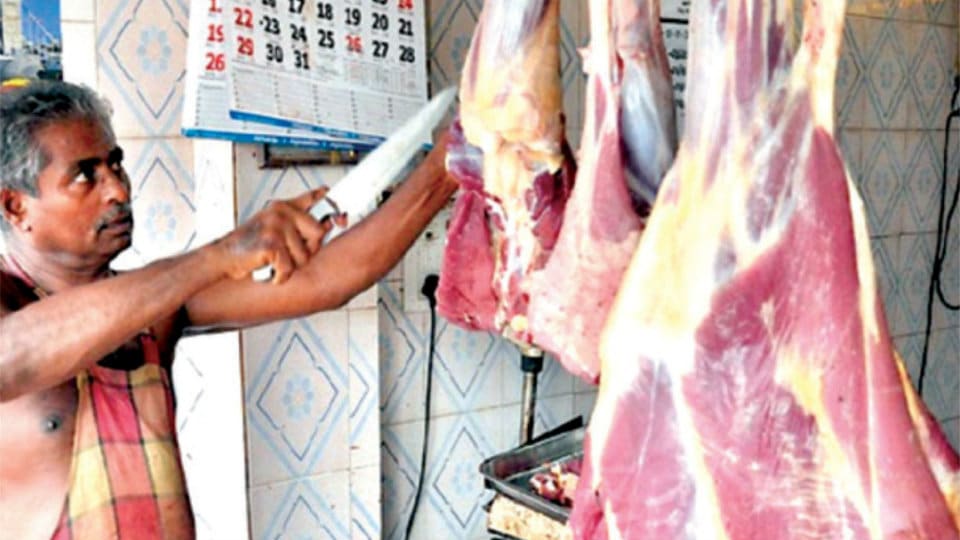Shortage despite 20,000 kg of red meat and 50,000 kg chicken flying off the shelves
Mysore/Mysuru: Long queues of people were witnessed in front of meat stalls across the city yesterday. Occasion: ‘Hosthodku’ celebrated a day after Ugadi where several buyers ignored safe practices for COVID and crowded to purchase meat.
So huge was the demand for meat that there was a shortage despite more than 1,500 goats and sheep making it to the slaughter houses. Ugadi is celebrated by tying neem-mango leaves at house entrances and eating a mixture of jaggery and neem leaves — symbolising the bitter-sweet experiences of life.
People continue celebrations even two days after the main Ugadi festival. While the first day begins with pujas, a grand feast of non-vegetarian delicacies takes place the next day called ‘Hosthodku’ and there is a tradition of distributing meat among relatives and guests.
Last April was lockdown time, thanks to the pandemic peak and people could not relish the meat to their fill as there were heavy restrictions. This year, however, rules and regulations were given a go-by and people stood with small bags and also 10-15 kg bags in front of shops.
There are over 400 licenced meat shops in the Mysuru City Corporation (MCC) limits and all the meat comes from the slaughter house at Kesare. The meat is certified by the MCC officials after collecting Rs. 20 per goat or sheep.
For this ‘Hosthodku’, over 1,500 animals were slaughtered from 6 am to 9 am and cleaned meat was distributed to all shops. On a normal day before COVID, over 500 animals were slaughtered and post-lockdown, over 300 to 350 animals were slaughtered.
But yesterday’s ‘Hosthodku’ saw 1,500 sheep and goats being slaughtered. Still, the demand was high and there was a shortage. Even merchants did not expect this windfall and they purchased limited quantity as the second wave of COVID pandemic is on the rise. Seeing many people carrying empty bags back to their homes, mutton traders rued that if they had anticipated this demand, they could have purchased more meat to be sold.
Usually, the process of slaughtering begins at 4 am and as at present there is night curfew, it began at 6 am. In the first four to five hours, over 20,000 kg of red meat and 50,000 kg chicken was sold and the MCC had fixed Rs. 600 to Rs. 620 per kg meat and as the demand increased, the meat was sold at Rs. 650 per kg.
Though the prices of chicken varied from Rs. 160 to Rs. 200 per kg, people preferred mutton and those who did not get their share rushed to city outskirts. Many areas beyond Ring Road practice a meat-selling system of ‘Gudde Mamsa.’ Here, the animal is slaughtered and sold on-the-spot where meat is grouped into small heaps (Gudde). Many people prefer to buy such meat as it is cheap.




Recent Comments